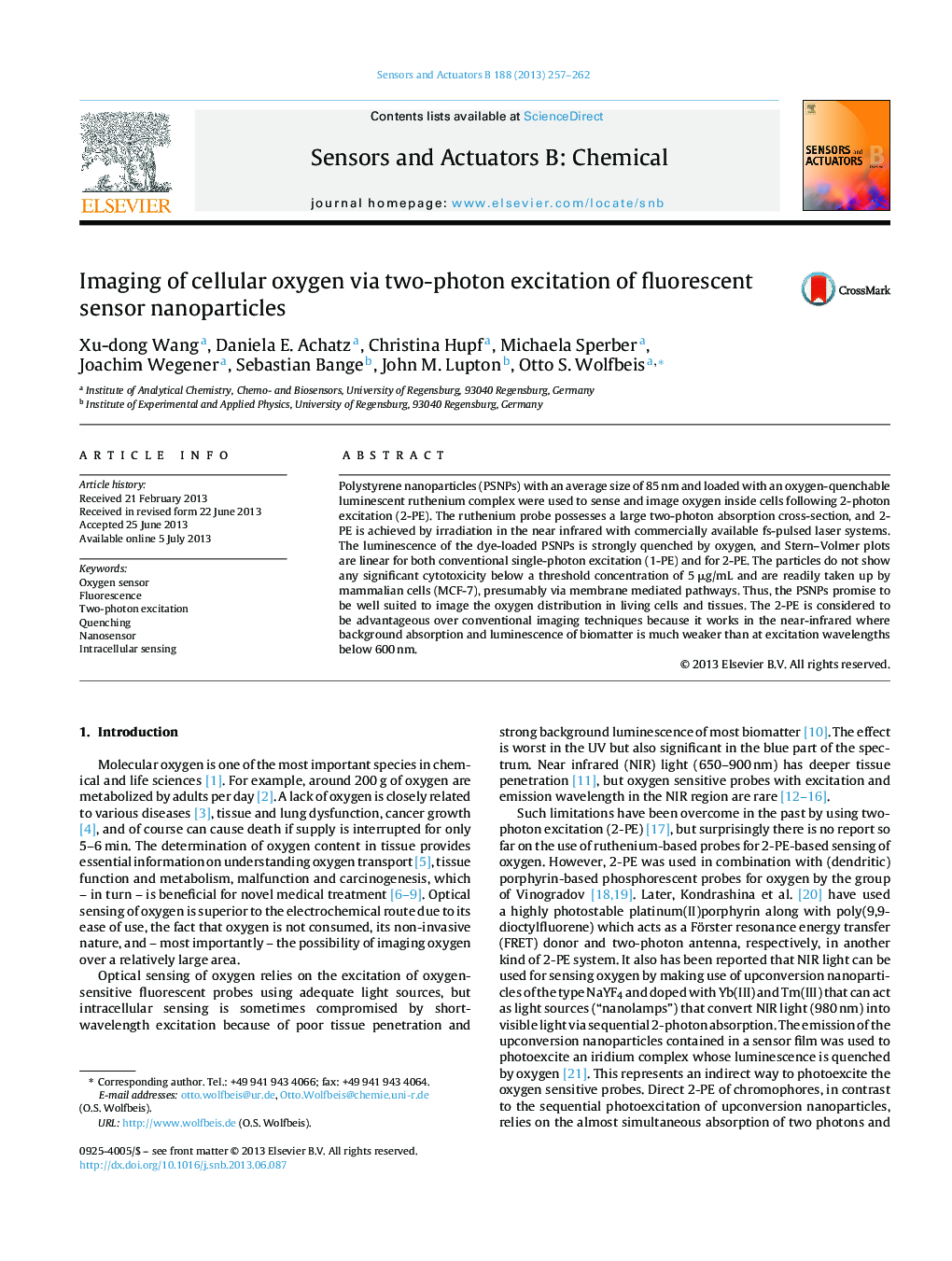| Article ID | Journal | Published Year | Pages | File Type |
|---|---|---|---|---|
| 7148271 | Sensors and Actuators B: Chemical | 2013 | 6 Pages |
Abstract
Polystyrene nanoparticles (PSNPs) with an average size of 85 nm and loaded with an oxygen-quenchable luminescent ruthenium complex were used to sense and image oxygen inside cells following 2-photon excitation (2-PE). The ruthenium probe possesses a large two-photon absorption cross-section, and 2-PE is achieved by irradiation in the near infrared with commercially available fs-pulsed laser systems. The luminescence of the dye-loaded PSNPs is strongly quenched by oxygen, and Stern-Volmer plots are linear for both conventional single-photon excitation (1-PE) and for 2-PE. The particles do not show any significant cytotoxicity below a threshold concentration of 5 μg/mL and are readily taken up by mammalian cells (MCF-7), presumably via membrane mediated pathways. Thus, the PSNPs promise to be well suited to image the oxygen distribution in living cells and tissues. The 2-PE is considered to be advantageous over conventional imaging techniques because it works in the near-infrared where background absorption and luminescence of biomatter is much weaker than at excitation wavelengths below 600 nm.
Related Topics
Physical Sciences and Engineering
Chemistry
Analytical Chemistry
Authors
Xu-dong Wang, Daniela E. Achatz, Christina Hupf, Michaela Sperber, Joachim Wegener, Sebastian Bange, John M. Lupton, Otto S. Wolfbeis,
